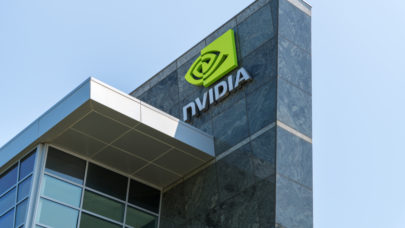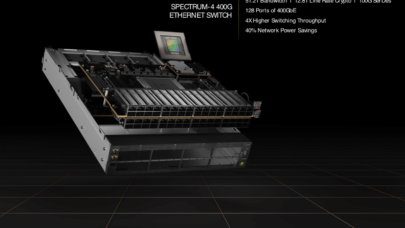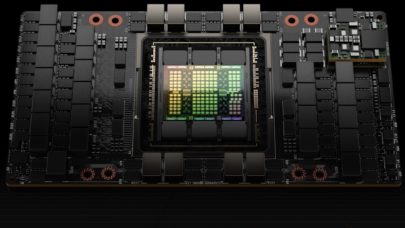
At GTC22, HPC and AI Get Edgy
March 30, 2022
From weather sensors and autonomous vehicles to electric grid monitoring and cloud gaming, the world’s edge computing is getting increasingly complex — but the world of HPC hasn’t necessarily caught up to these rapid innovations at the edge. At a panel at Nvidia’s virtual GTC22 (“HPC, AI, and the Edge”), five experts discussed how leading-edge HPC applications... Read more…

Eyeing Nvidia’s Omniverse for Fusion Reactor Design
March 25, 2022
With climate change accelerating and fossil fuel supplies proving increasingly contentious, ensuring a secure supply of clean energy is top-of-mind for many res Read more…

Nvidia Launches Clara Holoscan MGX, Spotlights Extensive Healthcare Portfolio
March 24, 2022
Digital biology and healthcare have been a long time coming. In fact, they’re hardly here in any complete sense. But they seem much closer and were on impressive virtual display at GTC22 in a blend of product introductions/updates and promising case histories underpinned by – no surprise – Nvidia technology and collaborator expertise. It is Nvidia’s conference... Read more…

Pfizer Discusses Use of Supercomputing and AI for Covid Drug Development
March 24, 2022
Over 16 months ago, Pfizer achieved a historic scientific moonshot — the unprecedentedly swift development and authorization of a novel vaccine for a novel virus using methods that hitherto had not been used in approved drugs at scale. Throughout the pandemic, nearly every public research supercomputer pivoted to some form of Covid research... Read more…

Nvidia Debuts Spectrum-4 Ethernet Platform with Eyes on the Enterprise
March 22, 2022
Amid the stream of news from GTC22 today was Nvidia’s launch of a new Ethernet networking platform – Spectrum-4 – and a new 51.2 terabit Spectrum-4 Ethern Read more…

Nvidia Combines Modulus, Omniverse for Earth-2 and Other Digital Twins
March 22, 2022
An accurate digital twin can be a boon to scientific endeavors, from recreating individual buildings in a city to understand energy use to recreating the Earth’s climate system to understand the effects of policies on climate change. At GTC21, Nvidia made waves by announcing that its Modulus framework for physics-based ML models and its... Read more…

Nvidia Launches Hopper H100 GPU, New DGXs and Grace Superchips
March 22, 2022
The battle for datacenter dominance keeps getting hotter. Today, Nvidia kicked off its spring GTC event with new silicon, new software and a new supercomputer. Speaking from a virtual environment in the Nvidia Omniverse 3D collaboration and simulation platform, CEO Jensen Huang introduced the new Hopper GPU architecture and the H100 GPU... Read more…

- Click Here for More Headlines

Whitepaper
Transforming Industrial and Automotive Manufacturing
In this era, expansion in digital infrastructure capacity is inevitable. Parallel to this, climate change consciousness is also rising, making sustainability a mandatory part of the organization’s functioning. As computing workloads such as AI and HPC continue to surge, so does the energy consumption, posing environmental woes. IT departments within organizations have a crucial role in combating this challenge. They can significantly drive sustainable practices by influencing newer technologies and process adoption that aid in mitigating the effects of climate change.
While buying more sustainable IT solutions is an option, partnering with IT solutions providers, such and Lenovo and Intel, who are committed to sustainability and aiding customers in executing sustainability strategies is likely to be more impactful.
Learn how Lenovo and Intel, through their partnership, are strongly positioned to address this need with their innovations driving energy efficiency and environmental stewardship.
Download Now
Sponsored by Lenovo
Whitepaper
How Direct Liquid Cooling Improves Data Center Energy Efficiency
Data centers are experiencing increasing power consumption, space constraints and cooling demands due to the unprecedented computing power required by today’s chips and servers. HVAC cooling systems consume approximately 40% of a data center’s electricity. These systems traditionally use air conditioning, air handling and fans to cool the data center facility and IT equipment, ultimately resulting in high energy consumption and high carbon emissions. Data centers are moving to direct liquid cooled (DLC) systems to improve cooling efficiency thus lowering their PUE, operating expenses (OPEX) and carbon footprint.
This paper describes how CoolIT Systems (CoolIT) meets the need for improved energy efficiency in data centers and includes case studies that show how CoolIT’s DLC solutions improve energy efficiency, increase rack density, lower OPEX, and enable sustainability programs. CoolIT is the global market and innovation leader in scalable DLC solutions for the world’s most demanding computing environments. CoolIT’s end-to-end solutions meet the rising demand in cooling and the rising demand for energy efficiency.
Download Now
Sponsored by CoolIT
Advanced Scale Career Development & Workforce Enhancement Center
Featured Advanced Scale Jobs:
HPCwire Resource Library
HPCwire Product Showcase
© 2024 HPCwire. All Rights Reserved. A Tabor Communications Publication
HPCwire is a registered trademark of Tabor Communications, Inc. Use of this site is governed by our Terms of Use and Privacy Policy.
Reproduction in whole or in part in any form or medium without express written permission of Tabor Communications, Inc. is prohibited.
























